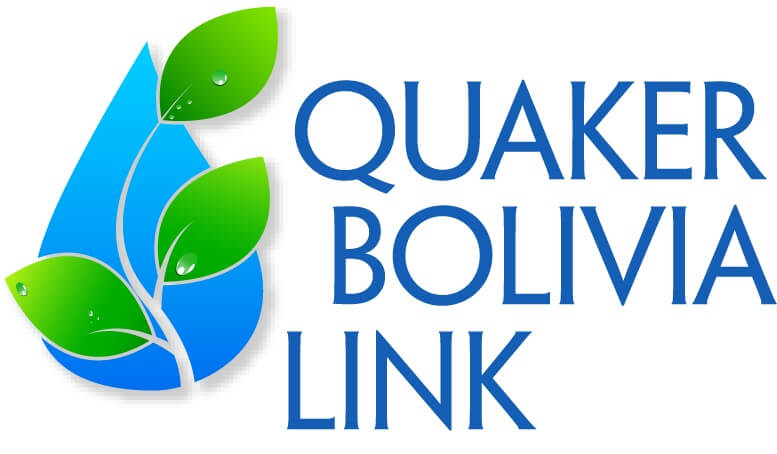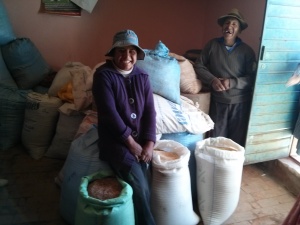On June 15, I visited the village of Janko Marca Sirpa to check on the new quinoa project. I arrived a little early. Not everyone had arrived yet. To call the other families, the project committee leader began hitting the flag pole in the center of the village square to get everyone’s attention. I’m not sure how the sound reaches the fields, but the others slowly made their way to the square.
This was my fourth visit to Janko Marca Sirpa. In 2012, we funded a water project. It was after the success of the water project that the village requested support for a project to help them improve their income. A quinoa project was the natural choice.
On this visit, while we were waiting for people to gather, we looked at the harvest from different families around the village square.
In my many years working with QBL, I’ve made dozens of visits to projects. The families are always proud of the work they have done, and are happy with the results of their efforts. This visit was notable, though. As the farmers opened up their bags to show off the grain, they showed a level of pride and joy that I don’t often see.
We visited the house of a young woman named Benedicta. She had a very good quinoa harvest. As we were talking about the threshing process, a man did a motion with his hands, and said the Aymara word quri. I asked for clarification about what he was saying. He explained that threshing was like washing gold, and quri is the Aymara word for gold. The imagery of the golden grains, threshing process and economic benefit of this crop made it all fit together.
The most recent statistics for the area, from 2001, indicated that 63% of the families in this municipality lived in extreme poverty: each family lives on less than one dollar a day. As a result of the QBL-sponsored quinoa project, most families were able to produce 250 pounds of quinoa. They will get about $2.33 per pound of quinoa at the market. All the vilalgers I talked to said that they would double the land dedicated to crowing quinoa to provide much-needed help for their family. That was good news.
When we funded the project, we hoped to also improve each families’ diet. As I talked with the farmers, each one said that they would sell half of their crop and consume the rest. They told about how the previous generations had lost the knowledge of how to grow quinoa in this area. They were proud to begin growing it again and to recover their heritage. We also sampled a rich variety of recipes. My favorite was the quinoa burger—quinoa patties made with egg and spinach.
These families are willing to invest their own funding and other resources to double a current project size. It is a good sign that the project will have a solid future.
We would like to help lift more people like Benedicta out of poverty. Your donations make projects like this possible, projects that change lives and empower Aymaran people to reclaim the ancient wisdom and sustainability of their culture.

